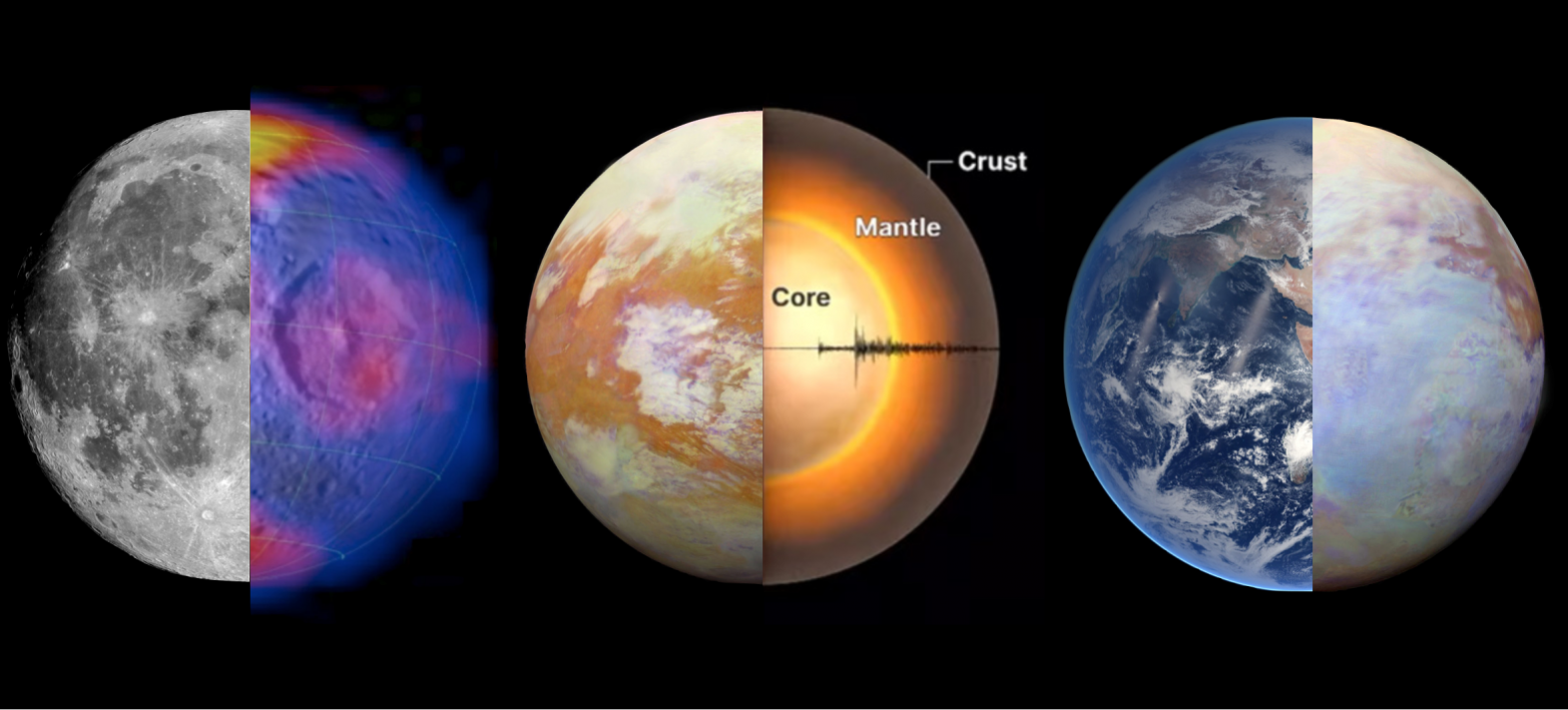Our research group conducts laboratory experiments and develops physical models of scattering, absorption and emission of solar and thermal infrared radiation from planetary surfaces and atmospheres. These studies make it possible to estimate the properties of atmospheric gases and aerosols, as well as the mineralogical composition, moisture and multiscale roughness of surfaces from remote sensing observations. We use a wide variety of measurements from Earth observation satellites (such as Pleiades, VENµS, and Sentinel) and planetary missions and observatories (such as Voyager, Galileo, Cassini, Lunar Reconnaissance Orbiter, Mars Reconnaissance Orbiter, and the James Webb Space Telescope). These studies help to elucidate the processes that govern the formation and evolution of planetary surfaces.

